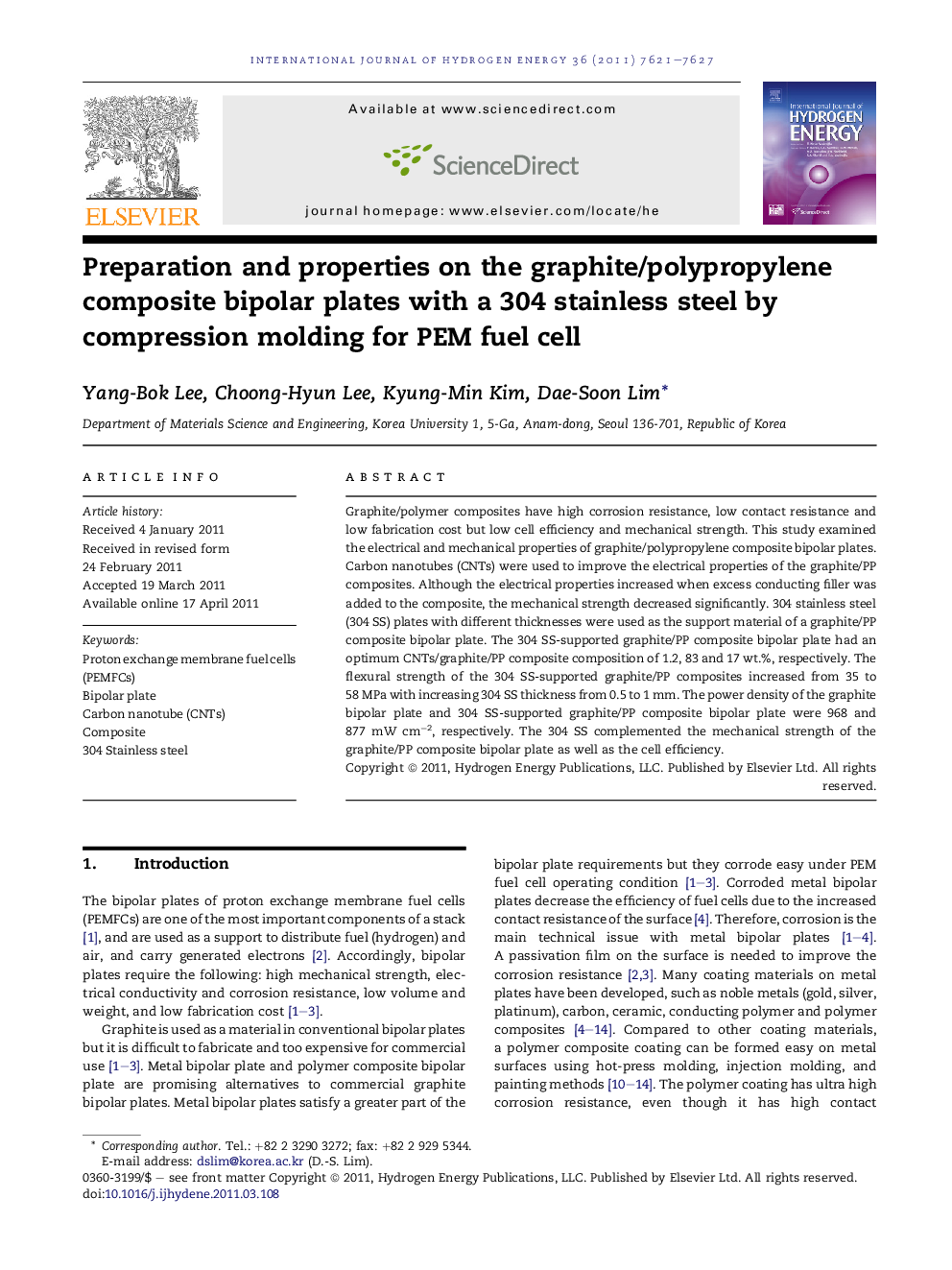| Article ID | Journal | Published Year | Pages | File Type |
|---|---|---|---|---|
| 1279289 | International Journal of Hydrogen Energy | 2011 | 7 Pages |
Graphite/polymer composites have high corrosion resistance, low contact resistance and low fabrication cost but low cell efficiency and mechanical strength. This study examined the electrical and mechanical properties of graphite/polypropylene composite bipolar plates. Carbon nanotubes (CNTs) were used to improve the electrical properties of the graphite/PP composites. Although the electrical properties increased when excess conducting filler was added to the composite, the mechanical strength decreased significantly. 304 stainless steel (304 SS) plates with different thicknesses were used as the support material of a graphite/PP composite bipolar plate. The 304 SS-supported graphite/PP composite bipolar plate had an optimum CNTs/graphite/PP composite composition of 1.2, 83 and 17 wt.%, respectively. The flexural strength of the 304 SS-supported graphite/PP composites increased from 35 to 58 MPa with increasing 304 SS thickness from 0.5 to 1 mm. The power density of the graphite bipolar plate and 304 SS-supported graphite/PP composite bipolar plate were 968 and 877 mW cm−2, respectively. The 304 SS complemented the mechanical strength of the graphite/PP composite bipolar plate as well as the cell efficiency.
► The 304 SS-supported graphite/PP composite bipolar plate was fabricated by conventional compression molding method. ► 304 SS plates with different thicknesses were used as the support material of a graphite/PP composite bipolar plate. ► The electrical, mechanical and corrosional properties and single cell performance were evaluated. ► The 304 SS improved the mechanical strength of the graphite/PP composite bipolar plate as well as the cell efficiency.
